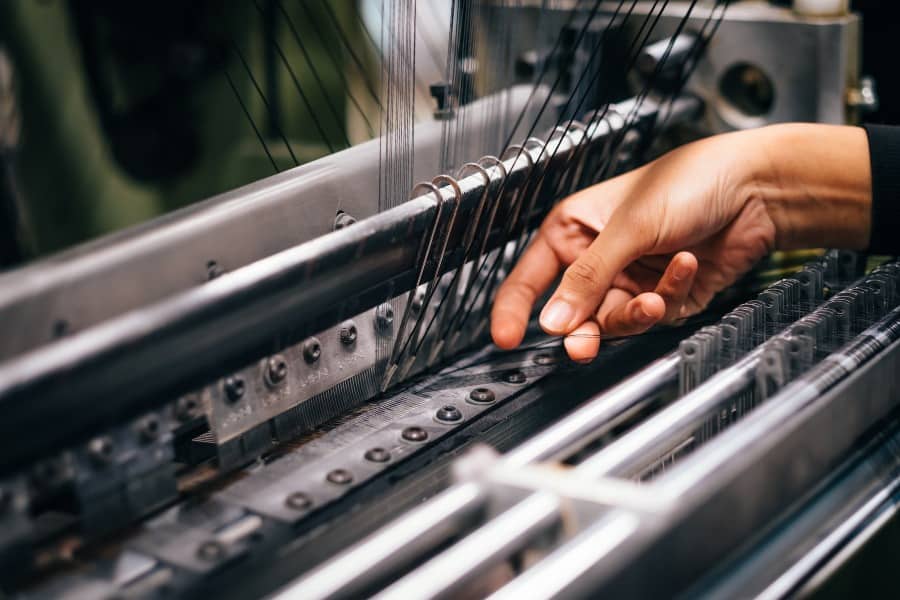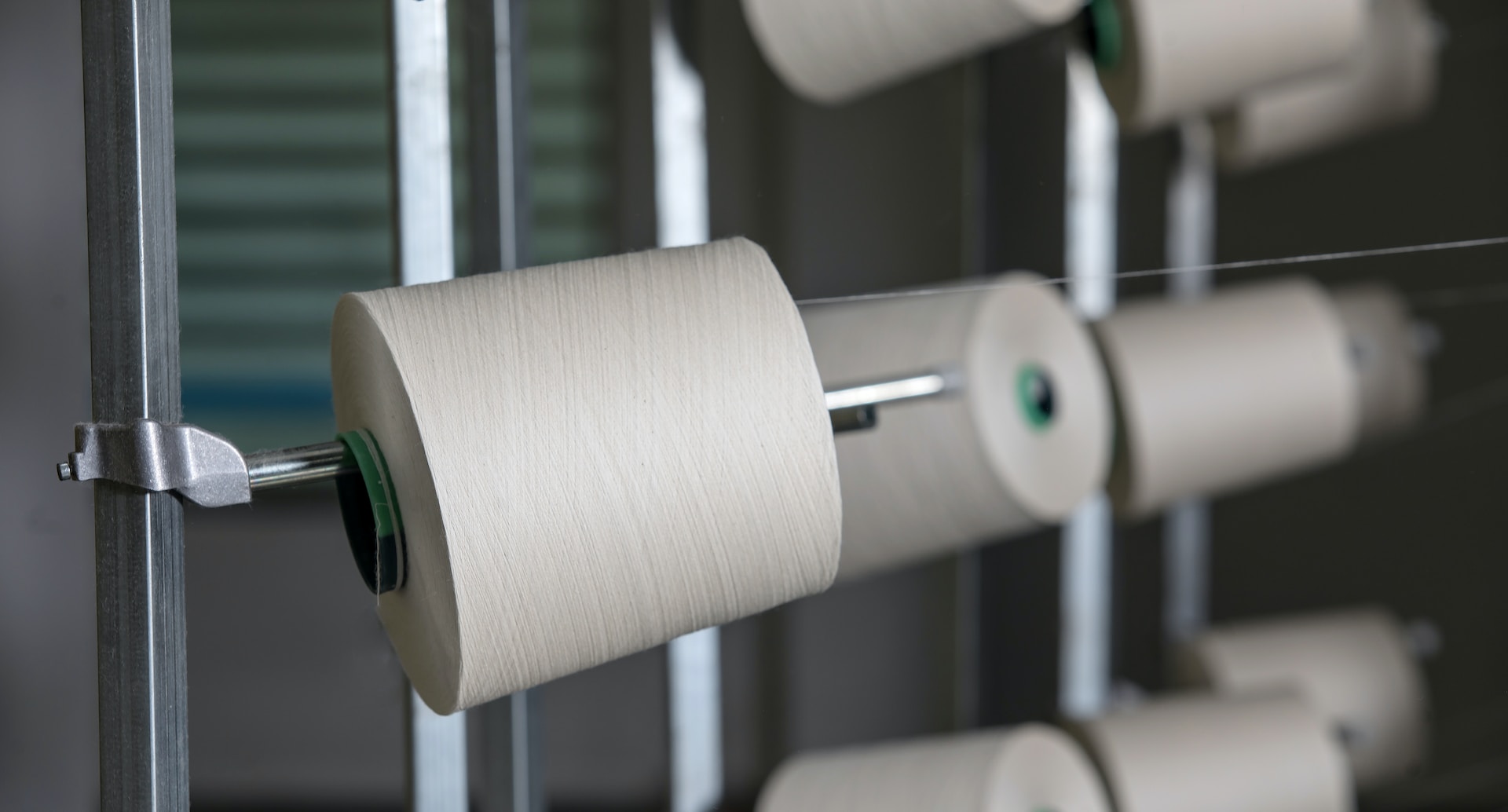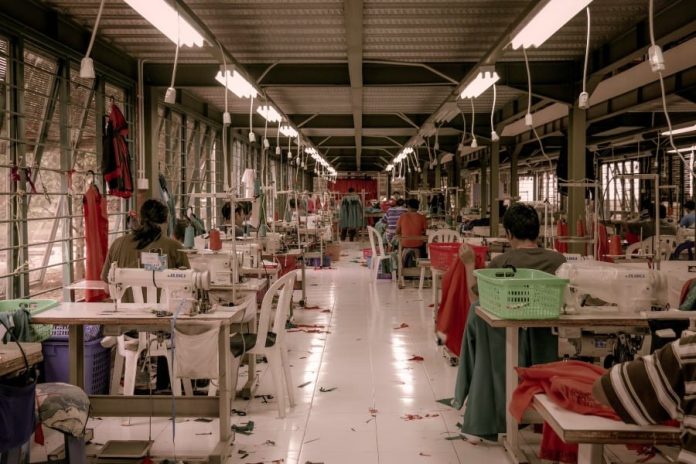Textiles are an integral part of our daily lives, from the clothes we wear to the upholstery in our homes. Behind the scenes, there’s a complex yet fascinating process that transforms raw fibers into the fabrics we rely on. In this SEO blog post, we’ll take you on a journey through the textile manufacturing process, shedding light on the steps involved and the innovations shaping the industry.
Section 1: Fiber Selection And Preparation
The textile manufacturing process begins with a crucial step: selecting the right fibers and preparing them for further processing. The choice of fibers and their preparation methods have a profound impact on the quality, appearance, and functionality of the final fabric. In this section, we’ll take a deeper look at fiber selection and the essential steps in fiber preparation.
The Significance Of Fiber Selection:
Natural Fibers: Natural fibers like cotton, wool, and silk offer unique properties. Cotton is known for its breathability and absorbency, wool for its warmth and moisture-wicking abilities, and silk for its luxurious feel.
Synthetic Fibers: Synthetic fibers such as polyester, nylon, and acrylic are prized for their durability, resilience, and wrinkle resistance.
Blends: Fiber selection can also involve creating blends of natural and synthetic fibers to combine the best of both worlds, such as comfort and durability.
Fiber Preparation:
Cleaning: Raw fibers often contain impurities, dirt, and foreign matter. Cleaning is the first step, where the fibers are thoroughly washed and cleaned to remove these contaminants.
Carding: Carding is a mechanical process that aligns and combs the fibers into a more uniform and parallel orientation. This step ensures the fibers are ready for spinning into yarn.
Combing: In some cases, combed cotton or wool is desired for its smoothness and fineness. Combining is an additional step that removes short fibers and leaves behind longer, finer ones.
Drawing: Drawing further aligns the fibers and combines them into a continuous strand, which is essential for spinning.
Section 2: Spinning Yarn
After the crucial steps of fiber selection and preparation, the next stage in the textile manufacturing process is spinning yarn. This transformative process converts prepared fibers into continuous threads or yarns, setting the stage for weaving or knitting. In this section, we’ll unravel the intricacies of spinning yarn.
Understanding The Spinning Process:
- Purpose: Spinning serves the essential function of aligning and twisting fibers together to create a cohesive, continuous strand of yarn.
- Historical Significance: Spinning has been a fundamental human activity for thousands of years, evolving from hand spindle methods to advanced machinery.
Different Spinning Methods:
- Ring Spinning: This traditional method involves a spinning frame where fibers are drawn, twisted, and wound onto a bobbin. It’s widely used for cotton and other natural fibers.
- Open-End Spinning: Open-end spinning is a high-speed, efficient method where fibers are twisted and spun into yarn without the need for a separate twisting mechanism.
- Rotor Spinning: Rotor spinning is another high-speed method that uses a rapidly rotating rotor to capture and twist fibers into yarn.
Section 3: Weaving And Knitting
Once yarn has been spun from fibers, the next step in textile manufacturing involves transforming these yarns into fabrics. This is accomplished through two primary processes: weaving and knitting. In this section, we’ll explore the intricacies of these techniques and their significance in creating a wide range of textiles.
Weaving:
- The Weaving Process: Weaving is one of the oldest textile production methods, dating back thousands of years. It involves interlacing two sets of yarn, known as the warp (lengthwise) and weft (crosswise), to create a fabric.
- The Loom: Traditional weaving is done on a loom, a mechanical device that holds the warp threads under tension and facilitates the interlacing process.
- Types of Weaves: Different weave patterns, such as plain weave, twill weave, and satin weave, result in fabrics with distinct textures and properties.
- Fabric Characteristics: Weaving influences fabric characteristics like strength, stability, and breathability. It is commonly used for fabrics such as denim, cotton shirting, and upholstery materials.
Knitting:

- The Knitting Process: Knitting involves creating fabric by interlocking loops of yarn with needles. This process is highly versatile, allowing for the creation of various textures and patterns.
- Types of Knitting: There are two primary types of knitting: weft knitting and warp knitting. Weft knitting is the most common and is used in techniques like jersey, rib, and cable knitting.
- Fabric Characteristics: Knitted fabrics are known for their stretchability and comfort, making them ideal for applications like sweaters, socks, and activewear.
- Knitting Machines: Modern knitting machines have revolutionized the industry by automating the knitting process and allowing for intricate designs.
Section 4: Dyeing And Printing
Dyeing and printing are the transformative stages in textile manufacturing where plain, uncolored fabrics are imbued with vibrant colors and intricate patterns. These processes not only enhance the aesthetic appeal of textiles but also play a crucial role in achieving specific design goals. In this section, we’ll delve into the details of dyeing and printing in textile production.
Dyeing:
- Dye Types: Dyes are chemical compounds used to color textiles. They can be categorized into various classes, including vat dyes, reactive dyes, direct dyes, and acid dyes, each with unique characteristics.
- Dye Application Methods: Dyes can be applied through methods such as batch dyeing (in closed vessels), continuous dyeing (on a production line), or piece dyeing (after fabric production). Each method offers specific advantages and is chosen based on the fabric type and production scale.
- Environmental Considerations: Sustainable dyeing practices involve the use of low-impact dyes, water recycling, and waste reduction strategies, reducing the environmental footprint of the dyeing process.
Printing:
- The Printing Process: Printing involves applying color or designs to fabric surfaces using various techniques, such as screen printing, rotary printing, digital printing, and block printing.
- Block Printing: This traditional method uses carved wooden blocks to stamp designs onto the fabric. It is still widely used for artisanal and handcrafted textiles.
- Digital Printing: Modern technology has revolutionized textile printing, allowing for intricate and vibrant designs with minimal setup and waste.
- Repeat Patterns: Textile designers create repeat patterns, ensuring that the design seamlessly continues across the fabric.
Section 5: Finishing And Inspection
In the textile manufacturing process, finishing and inspection are the final steps that significantly impact the quality, appearance, and functionality of the fabric. These crucial stages ensure that the textile product meets industry standards and customer expectations. In this section, we’ll delve into the details of finishing and inspection in textile production.
Scouring And Bleaching:
- Scouring: Scouring involves washing the fabric to remove any residual impurities, sizing agents, or natural oils. It prepares the fabric for subsequent treatments and dyeing.
- Bleaching: Bleaching is used to whiten or lighten the fabric. It can be essential for achieving vibrant and consistent colors during dyeing.
Dye Fixing And Color Enhancement:
- Dye Fixing: After dyeing, the fabric may undergo a process to fix the dye molecules more securely to the fibers, improving color fastness and reducing bleeding.
- Color Enhancement: Additional processes like color correction or color setting may be applied to achieve the desired color vibrancy and uniformity.
Softening And Setting:
- Softening: Softening treatments are applied to improve the fabric’s hand feel, making it more comfortable to wear or touch.
- Setting: Setting treatments help stabilize the fabric and its dye, ensuring color retention and resistance to shrinkage.
Quality Inspection:
- Visual Inspection: Trained inspectors examine the fabric for defects, such as weaving or printing irregularities, stains, or color discrepancies.
- Physical Testing: Fabrics undergo various tests for attributes like tensile strength, abrasion resistance, and pilling resistance.
- Colorfastness Testing: Colorfastness tests assess the fabric’s ability to retain its color under different conditions, such as washing, exposure to light, or contact with chemicals.
Compliance And Standards:
- Meeting Industry Standards: Textile manufacturers must adhere to industry-specific standards and regulations to ensure product quality and safety.
- Environmental Considerations: Sustainable finishing practices focus on reducing the environmental impact of processes, such as using eco-friendly chemicals or minimizing water usage.
Innovation In Finishing:
- Nano-Finishing: Nanotechnology has led to innovations in fabric finishing, including the development of fabrics with enhanced stain resistance and moisture-wicking properties.
- Smart Textiles: Research into smart textiles has introduced fabrics with embedded sensors, enabling applications in wearable technology and medical textiles.
Section 6: Fabric Applications And Innovation
Once textiles have undergone the intricate processes of fiber selection, preparation, spinning, weaving or knitting, dyeing or printing, and finishing, they are ready to take on a myriad of applications. From everyday clothing to specialized technical textiles, fabrics play a central role in our lives. In this section, we’ll explore the diverse applications and innovative developments in the world of textiles.
1. Apparel:

- Everyday Wear: Fabrics like cotton, polyester, and blends are used for everyday clothing, providing comfort and style.
- Technical Fabrics: Technical textiles with moisture-wicking, UV protection, and thermal properties are increasingly popular for activewear and outdoor gear.
- High Fashion: Designers often choose luxurious and innovative textiles for high-end fashion creations.
2. Home Textiles:
- Bedding: Cotton, linen, and silk are common choices for bed linens and sheets, with a focus on comfort and breathability.
- Upholstery: Durable and stain-resistant fabrics like microfiber and synthetic blends are used for furniture upholstery.
- Curtains: Fabrics with light-blocking or thermal properties are favored for curtains and drapes.
3. Technical Textiles:
- Automotive Textiles: Fabrics in cars serve various purposes, from upholstery and interior aesthetics to airbags and seat belts.
- Medical Textiles: Innovations in medical textiles include antimicrobial fabrics, wound dressings, and even textiles used in organ scaffolding.
- Geotextiles: Fabrics are used in civil engineering for applications like soil stabilization and erosion control.
4. Smart Textiles:
- Wearable Technology: Fabrics with embedded sensors or conductive threads enable wearable tech, such as fitness trackers and smart clothing.
- Health Monitoring: Smart textiles are used for continuous health monitoring, with applications in telemedicine and elderly care.
- FashionTech: Designers are incorporating technology into fashion, such as light-up fabrics and responsive textiles.
5. Sustainable Fabrics:
- Organic Cotton: Organic farming practices reduce the environmental impact of cotton production.
- Recycled Materials: Fabrics made from recycled plastics and other materials help divert waste from landfills.
- Eco-friendly Dyes: Low-impact and natural dyes minimize the environmental footprint of textile production.
6. Future Innovations:
- 3D-Printed Textiles: Emerging technologies are enabling the creation of three-dimensional textiles, expanding possibilities in design and function.
- Biodegradable Textiles: Researchers are working on fabrics that break down naturally at the end of their lifecycle, reducing textile waste.
- Nanotechnology: Nanofibers and coatings are enhancing fabric properties, from waterproofing to antimicrobial protection.
Conclusion
The textile manufacturing process is a blend of tradition and innovation, combining centuries-old techniques with cutting-edge technologies. Understanding this process not only allows us to appreciate the textiles we use daily but also highlights the industry’s commitment to sustainability and quality. As textile manufacturing continues to evolve, it will play a pivotal role in shaping the future of fashion, home décor, and countless other aspects of our lives.


